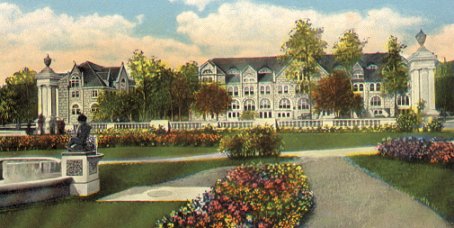Recently I gave a personal record of three (3!) talks in one day in two different languages. I was honored to be invited to speak in the online colloquium of the Universidad de El Salvador, but the date available happened to be on the same day that I had already agreed to speak in the Rocky Mountain Algebraic Combinatorics Seminar (RMACS) at Colorado State in nearby Fort Collins. The topics were similar so fortunately it wasn’t too too much work to prepare, but on top of two Calculus classes in the morning, seldom have I spoken so much in one day.
I enjoyed the format of RMACS which gave the opportunity for an introductory talk before a regular research talk to try create an open environment for graduate students and folks from other fields. It reminded me of a concept I’m still eager to try to make happen in math of talks-as-dialogues. That is, I think it would be interesting to have math talks operate as conversations between two people where one is trying to explain something to the other and the “explainee” can interrupt, question, elaborate or make connections as much as they like.
I think the most enjoyable math talks I’ve attended have more-or-less functioned in this way already, as conversations between the attendees and the presenter. This is often to the expositor’s credit, having selected and introduced their topic (or themselves) in a way that invites this sort of interaction. But building a conversational flow into the structure of our talks I think would frequently force the rendering of ideas in ways that are, if not more clear, at least more diverse and therefore accessible to an audience.
Good discussion is part of good exposition. One can observe this in the way radio programs, podcasts or videos media that interview experts (like, say, Numberphile) are structured. Radiolab also comes to mind as a program exploits of this technique. An expert isn’t just invited on the show to explain their theory and known results for an hour. There are constant interruptions for clarifications, “what ifs”, auditory “illustrations,” philosophical tangents, and expressions of wonder and amusement. You could also see parallels in the idea of masterclasses from music performance. Though the tone and politic is more authoritarian than what I am imagining, a masterclass (in which musician performs, receives coaching from a “master,” and responds and adjusts before an audience) appeals to our interest in the dialogic element of engaging with art.
For a math talk, this would put some pressure on the “explainee,” but it would also alleviate the pressure on other audience members to feel guilty for interrupting the speaker or asking questions at the wrong time etc. Interaction from the rest of the audience would hopefully encouraged in this set-up, and we could democratize research talks in the ways we are beginning to do with our classrooms. The audience would be freer to dictate what it is they want to get out of the talk. Multiple perspectives could be heard. Knowledge would be shared, and interpreted.
I’m not saying all traditional math talks should go away. There’s always a time and place for a well-delivered lecture. But I think every mathematician’s experience with research talks is uneven enough for us to suspect that maybe there should be other ways for us to communicate our research.
